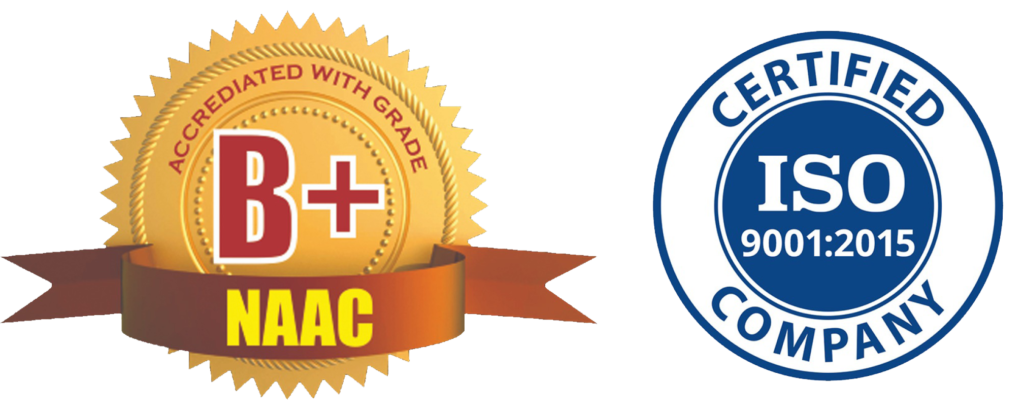Best Practices
Title of the Practice: Mentoring System
1.Objectives of the Practice:
- To provide more contact hours between teachers and students.
- To maintain proper academic and attendance records of students.
- To minimize drop-out rates of students.
- To identify slow learners and advanced learners
2.Context: The institute has implemented the mentoring system in accordance with IQAC, Higher Education’s recommendations. The institute deemed it essential to incorporate this system into the college management system. In the past three years, it had swiftly and successfully implemented it. With a diverse student population in terms of educational and economic background, the system promises to provide a deeper understanding of each student and maximize their potential, thereby reducing the number of students who drop out.
3.Practice: The IQAC had initiated the implementation of this system. Each year, the students’ names are collected and arranged according to their subject preferences. Depending on the number of students, they are separated into groups of 20 to 25 individuals. Each group is assigned a teacher/mentor who is responsible for collecting individual students’ academic performance and class attendance. The teacher/mentor is provided with pertinent information about his/her mentees and is expected to provide guidance and counseling as needed. On the recommendation of the mentor, parents are called to special meetings with the principal in rare instances. Faculty mentoring is conducted formally or informally by a senior faculty member or group of faculty members. The objective is to assist (junior) faculty in reaching their full potential as instructors, researchers, and administrators.
4.These mentoring relationships, a form of informal mentoring, may consist of colleagues with similar interests and roles within higher education institutions. Peer mentors or co-mentors support one another by sharing information, resources, and feedback, exchanging roles as mentors and portages, and assisting others in the peer or co-mentoring relationship to develop their knowledge and abilities.
5.Evidence of success
Even though the system has only been in place for a few years, the teacher-student relationship has improved significantly. The system has proven useful for distinguishing between slow and advanced learners. For poor/slow learners, the institute organizes a remedial class on various subjects within the curriculum, based on the requirements deduced from a thorough examination of each mentor’s report.
Following the implementation of this system, remedial classes have become systematized. The students and the college as a whole have benefited from remedial classes based on their individual needs. There appears to be a decrease in the number of students who drop out of school because mentors can intervene before a student falls below the attendance threshold or has been chronically absent.
- Problems encountered and resources required: The assignment of students to groups proves to be a tiresome process, with some students occasionally choosing different courses. Time restrictions prevent the mentor/teacher from spending enough time with the mentees. The ability of the mentors to provide assistance is limited by the fact that the majority of our students are reserved and some are too complacent to share their problems.
- Outcome: Mentoring system has been effectively implemented. Some enhancements need to be carried out to make the mentoring system more effective.
Focussed and Skill-Based Training for enhancing Employability Skills
Context:
It is the institution’s fondest hope to disseminate the fruits of knowledge and play a crucial role in shaping young minds toward predetermined goals. Appropriately conceived and implemented programs are granting the institution immaculate and imminent success. In the educational spectrum, it is anticipated that the institution’s journey with an averted distinction will produce miraculous and thumping success. The unified objective is being pursued by a group of stalwarts, who are the originators of remarkable accomplishments. The institution’s distinctive and majestic programs are intended to facilitate the convergence of knowledge, attitude, and execution skills.
Objectives:
- To prepare students for placement activities
- To understand the significance of pre-placement preparations
- To organize pre-placement training, mock interviews, workshops, and seminars for students.
- Teach students the oral and written communication skills and knowledge necessary to
successfully navigate the placement process.
The Practice:
The rigorous training program is meticulously planned and executed by senior faculty members with distinguished credentials in their respective fields of expertise. CRT is an intense placement-oriented drill. The purpose of the training is to prepare students for upcoming drives. Provided is intensive training on the technical and fundamental knowledge of all streams. The purpose of aptitude training programs is to evaluate and improve the problem-solving ability of candidates. Regular tests of analytical and logical reasoning are administered to enhance their skills. Conducting group discussions on contemporary topics with the students and providing feedback on their mistakes.
To boost confidence, specialized training on communication, attitude, confidence, and behavior skills isprovided. To improve their performance, they engage in mock interviews and resume writing exercises.
Evidence of Success:
The program is initiated with high expectations and a clear vision to provide placements for students from rural areas within a 20-kilometer radius of Narasaraopet. The institution’s ardent and sincere efforts have begun yielding very positive results. It is an honor to present the following information regarding the college’s total placements from 2017 to the present. The data collected over the years indicate that the college’s students were exemplary and became role models for their younger peers.
Problems encountered:
The majority of students at the college come from rural areas and speak Telugu as their primary language. Communication skills deficiency is one of the greatest obstacles to campus interviews. Therefore, students encountered communication difficulties during their interviews. Therefore, special consideration must be given to enhancing their skills in areas such as communication, personality development, etc. CRT classes are occasionally held outside of normal college class hours. However, a few students were unable to attend due to logistical issues. Due to the institute’s location in a semi-urban area, numerous multinational corporations were hesitant to visit our campus.
 Online Payment
Online Payment

